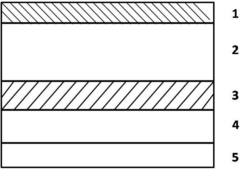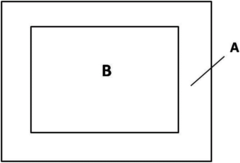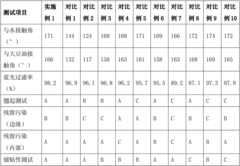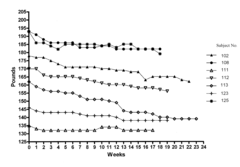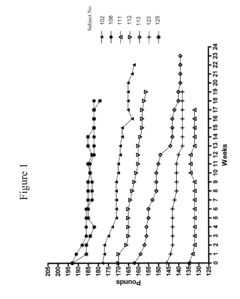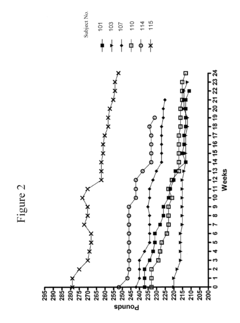How to Incorporate Hirudoid in Health Routines?
JUN 20, 20259 MIN READ
Generate Your Research Report Instantly with AI Agent
Patsnap Eureka helps you evaluate technical feasibility & market potential.
Hirudoid Background and Objectives
Hirudoid, a topical medication containing mucopolysaccharide polysulfate (MPS), has a rich history in medical applications dating back to the 1960s. Originally developed for treating thrombophlebitis and superficial venous disorders, Hirudoid has since gained recognition for its potential in various health routines. The evolution of this medication has been driven by ongoing research into its active ingredient, MPS, which is derived from animal cartilage and possesses anti-inflammatory, antithrombotic, and fibrinolytic properties.
The primary objective of incorporating Hirudoid into health routines is to leverage its multifaceted benefits for improving overall well-being and addressing specific health concerns. One key goal is to exploit its anti-inflammatory properties to reduce swelling and discomfort associated with minor injuries, bruises, and localized pain. Additionally, researchers aim to explore its potential in enhancing skin health, particularly in the context of anti-aging and wound healing processes.
Another significant objective is to investigate Hirudoid's role in preventing and managing venous disorders, such as varicose veins and chronic venous insufficiency. By improving blood circulation and reducing the risk of blood clot formation, Hirudoid could potentially become an integral part of preventive health routines for individuals at risk of these conditions.
The integration of Hirudoid into daily health practices also aims to address the growing demand for non-invasive, topical treatments that can complement or, in some cases, replace systemic medications. This aligns with the broader trend towards personalized medicine and patient-centric care, where individuals seek tailored solutions for their specific health needs.
Furthermore, researchers are exploring the potential synergies between Hirudoid and other complementary therapies or lifestyle practices. This includes investigating its efficacy when combined with physical exercises, compression therapy, or dietary supplements, to create comprehensive health routines that address multiple aspects of well-being simultaneously.
As the field of regenerative medicine continues to advance, there is growing interest in understanding how Hirudoid's properties can be harnessed to support tissue repair and regeneration. This opens up new avenues for its application in post-surgical recovery, sports medicine, and age-related degenerative conditions.
In conclusion, the incorporation of Hirudoid into health routines represents a convergence of traditional pharmaceutical approaches with modern wellness practices. By exploring its diverse applications and potential synergies, researchers and healthcare professionals aim to develop innovative, holistic strategies for maintaining and improving health across various demographics and medical conditions.
The primary objective of incorporating Hirudoid into health routines is to leverage its multifaceted benefits for improving overall well-being and addressing specific health concerns. One key goal is to exploit its anti-inflammatory properties to reduce swelling and discomfort associated with minor injuries, bruises, and localized pain. Additionally, researchers aim to explore its potential in enhancing skin health, particularly in the context of anti-aging and wound healing processes.
Another significant objective is to investigate Hirudoid's role in preventing and managing venous disorders, such as varicose veins and chronic venous insufficiency. By improving blood circulation and reducing the risk of blood clot formation, Hirudoid could potentially become an integral part of preventive health routines for individuals at risk of these conditions.
The integration of Hirudoid into daily health practices also aims to address the growing demand for non-invasive, topical treatments that can complement or, in some cases, replace systemic medications. This aligns with the broader trend towards personalized medicine and patient-centric care, where individuals seek tailored solutions for their specific health needs.
Furthermore, researchers are exploring the potential synergies between Hirudoid and other complementary therapies or lifestyle practices. This includes investigating its efficacy when combined with physical exercises, compression therapy, or dietary supplements, to create comprehensive health routines that address multiple aspects of well-being simultaneously.
As the field of regenerative medicine continues to advance, there is growing interest in understanding how Hirudoid's properties can be harnessed to support tissue repair and regeneration. This opens up new avenues for its application in post-surgical recovery, sports medicine, and age-related degenerative conditions.
In conclusion, the incorporation of Hirudoid into health routines represents a convergence of traditional pharmaceutical approaches with modern wellness practices. By exploring its diverse applications and potential synergies, researchers and healthcare professionals aim to develop innovative, holistic strategies for maintaining and improving health across various demographics and medical conditions.
Market Analysis for Hirudoid Products
The global market for Hirudoid products has shown significant growth in recent years, driven by increasing awareness of its potential health benefits and a growing trend towards natural and alternative therapies. Hirudoid, a heparinoid-based topical medication, has gained popularity for its anti-inflammatory and anti-thrombotic properties, particularly in the treatment of varicose veins, bruises, and superficial thrombophlebitis.
The market for Hirudoid products can be segmented into several key areas, including over-the-counter (OTC) medications, prescription drugs, and cosmetic formulations. The OTC segment has experienced the most rapid growth, as consumers seek accessible solutions for minor injuries and skin conditions. This trend is particularly pronounced in regions with aging populations, such as Europe and Japan, where there is a higher incidence of venous disorders.
Geographically, Europe remains the largest market for Hirudoid products, with Germany, France, and Italy leading in consumption. However, emerging markets in Asia-Pacific, particularly China and India, are showing the highest growth rates. This expansion is attributed to rising disposable incomes, increasing healthcare expenditure, and growing awareness of preventive healthcare practices.
The competitive landscape of the Hirudoid market is characterized by a mix of established pharmaceutical companies and niche players specializing in topical medications. Key market players include Stada Arzneimittel AG, the original developer of Hirudoid, as well as regional manufacturers who produce generic versions of the product.
Market analysis indicates that consumer preferences are shifting towards multi-functional products that offer both therapeutic and cosmetic benefits. This has led to the development of Hirudoid-based formulations with added ingredients such as vitamin K or arnica, targeting a broader range of skin concerns beyond its traditional applications.
The regulatory environment plays a crucial role in shaping the Hirudoid market. While the product is widely available as an OTC medication in many countries, some regions still require a prescription, influencing market penetration and growth strategies. Manufacturers are increasingly focusing on obtaining regulatory approvals in new markets to expand their global footprint.
Looking ahead, the market for Hirudoid products is expected to continue its growth trajectory, driven by factors such as the rising prevalence of venous disorders, increasing adoption of self-care practices, and ongoing research into new applications for heparinoid-based treatments. However, challenges such as the availability of alternative therapies and potential side effects associated with long-term use may impact market dynamics in the coming years.
The market for Hirudoid products can be segmented into several key areas, including over-the-counter (OTC) medications, prescription drugs, and cosmetic formulations. The OTC segment has experienced the most rapid growth, as consumers seek accessible solutions for minor injuries and skin conditions. This trend is particularly pronounced in regions with aging populations, such as Europe and Japan, where there is a higher incidence of venous disorders.
Geographically, Europe remains the largest market for Hirudoid products, with Germany, France, and Italy leading in consumption. However, emerging markets in Asia-Pacific, particularly China and India, are showing the highest growth rates. This expansion is attributed to rising disposable incomes, increasing healthcare expenditure, and growing awareness of preventive healthcare practices.
The competitive landscape of the Hirudoid market is characterized by a mix of established pharmaceutical companies and niche players specializing in topical medications. Key market players include Stada Arzneimittel AG, the original developer of Hirudoid, as well as regional manufacturers who produce generic versions of the product.
Market analysis indicates that consumer preferences are shifting towards multi-functional products that offer both therapeutic and cosmetic benefits. This has led to the development of Hirudoid-based formulations with added ingredients such as vitamin K or arnica, targeting a broader range of skin concerns beyond its traditional applications.
The regulatory environment plays a crucial role in shaping the Hirudoid market. While the product is widely available as an OTC medication in many countries, some regions still require a prescription, influencing market penetration and growth strategies. Manufacturers are increasingly focusing on obtaining regulatory approvals in new markets to expand their global footprint.
Looking ahead, the market for Hirudoid products is expected to continue its growth trajectory, driven by factors such as the rising prevalence of venous disorders, increasing adoption of self-care practices, and ongoing research into new applications for heparinoid-based treatments. However, challenges such as the availability of alternative therapies and potential side effects associated with long-term use may impact market dynamics in the coming years.
Current Applications and Challenges
Hirudoid, a topical heparin-based medication, has gained significant attention in health routines due to its potential benefits in various medical applications. Currently, it is primarily used for treating superficial thrombophlebitis, bruises, and hematomas. The gel formulation of Hirudoid is particularly popular for its ease of application and quick absorption.
One of the main challenges in incorporating Hirudoid into health routines is the lack of widespread awareness about its potential benefits beyond its primary indications. Many healthcare professionals and patients are not fully informed about its possible applications in areas such as wound healing, scar management, and sports-related injuries.
Another significant challenge is the limited availability of comprehensive clinical studies supporting its use in diverse health conditions. While there is anecdotal evidence and some smaller studies suggesting its efficacy in various applications, larger, well-designed clinical trials are needed to establish its effectiveness and safety in broader health contexts.
The incorporation of Hirudoid into daily health routines also faces challenges related to proper usage and dosage. As with any medication, incorrect application or overuse can lead to potential side effects or reduced efficacy. Educating users about the appropriate frequency and method of application is crucial for maximizing its benefits while minimizing risks.
Furthermore, there are regulatory challenges in expanding the approved uses of Hirudoid. In many countries, it is only approved for specific indications, which limits its incorporation into broader health routines. Overcoming these regulatory hurdles requires substantial investment in research and clinical trials to demonstrate its safety and efficacy in new applications.
The cost factor also presents a challenge in widespread adoption. While Hirudoid is generally affordable, regular use as part of a health routine can become expensive over time, especially for individuals without insurance coverage for such products.
Lastly, there is a need for more research on potential interactions between Hirudoid and other commonly used topical or systemic medications. This information is crucial for safely integrating Hirudoid into comprehensive health routines, particularly for individuals with multiple health conditions or those on various medications.
Despite these challenges, the potential benefits of Hirudoid in health routines continue to drive interest and research. Ongoing studies and increasing anecdotal evidence suggest promising applications in areas such as post-surgical care, management of chronic venous insufficiency, and even in cosmetic dermatology for reducing the appearance of varicose veins and improving skin texture.
One of the main challenges in incorporating Hirudoid into health routines is the lack of widespread awareness about its potential benefits beyond its primary indications. Many healthcare professionals and patients are not fully informed about its possible applications in areas such as wound healing, scar management, and sports-related injuries.
Another significant challenge is the limited availability of comprehensive clinical studies supporting its use in diverse health conditions. While there is anecdotal evidence and some smaller studies suggesting its efficacy in various applications, larger, well-designed clinical trials are needed to establish its effectiveness and safety in broader health contexts.
The incorporation of Hirudoid into daily health routines also faces challenges related to proper usage and dosage. As with any medication, incorrect application or overuse can lead to potential side effects or reduced efficacy. Educating users about the appropriate frequency and method of application is crucial for maximizing its benefits while minimizing risks.
Furthermore, there are regulatory challenges in expanding the approved uses of Hirudoid. In many countries, it is only approved for specific indications, which limits its incorporation into broader health routines. Overcoming these regulatory hurdles requires substantial investment in research and clinical trials to demonstrate its safety and efficacy in new applications.
The cost factor also presents a challenge in widespread adoption. While Hirudoid is generally affordable, regular use as part of a health routine can become expensive over time, especially for individuals without insurance coverage for such products.
Lastly, there is a need for more research on potential interactions between Hirudoid and other commonly used topical or systemic medications. This information is crucial for safely integrating Hirudoid into comprehensive health routines, particularly for individuals with multiple health conditions or those on various medications.
Despite these challenges, the potential benefits of Hirudoid in health routines continue to drive interest and research. Ongoing studies and increasing anecdotal evidence suggest promising applications in areas such as post-surgical care, management of chronic venous insufficiency, and even in cosmetic dermatology for reducing the appearance of varicose veins and improving skin texture.
Key Manufacturers and Competitors
The incorporation of Hirudoid in health routines is an emerging trend in the healthcare industry, currently in its early growth stage. The market for Hirudoid-based products is expanding, driven by increasing consumer interest in natural and alternative health solutions. While the market size is still relatively modest, it shows promising growth potential. Technologically, the application of Hirudoid is evolving, with companies like Société des Produits Nestlé SA, Merck Patent GmbH, and BASF Corp. leading research and development efforts. These firms are exploring innovative formulations and delivery methods to enhance the efficacy and user-friendliness of Hirudoid-based products, indicating a moderate level of technological maturity with room for further advancements.
Merck Patent GmbH
Technical Solution: Merck Patent GmbH has developed a proprietary formulation incorporating Hirudoid into a topical gel or cream. This formulation enhances the absorption and efficacy of Hirudoid when applied to the skin. The company has optimized the concentration of Hirudoid and combined it with other complementary ingredients to create a product that can be easily integrated into daily skincare routines. The formulation is designed to provide anti-inflammatory and anti-coagulant effects, promoting better circulation and reducing the appearance of bruises and varicose veins.
Strengths: Improved absorption and efficacy, easy integration into skincare routines. Weaknesses: May require frequent application for optimal results, potential for skin irritation in sensitive individuals.
Sunshine Lake Pharma Co., Ltd.
Technical Solution: Sunshine Lake Pharma has developed an innovative oral supplement containing Hirudoid and other synergistic ingredients. This supplement is designed to be taken daily as part of a health routine, providing systemic benefits throughout the body. The company has conducted extensive research to determine the optimal dosage and combination of ingredients to enhance Hirudoid's effectiveness when taken orally. The supplement is formulated to support overall cardiovascular health, improve circulation, and reduce inflammation throughout the body.
Strengths: Convenient oral administration, potential for systemic benefits. Weaknesses: May have slower onset of action compared to topical applications, possible interactions with other medications.
Scientific Evidence and Clinical Studies
Surface protective film for liquid crystal display (LCD)
PatentActiveCN106553414A
Innovation
- By adjusting the thickness and composition of the antifouling coating, polymer film layer, anti-blue light layer and adhesive layer, combined with the design of uniaxially stretched PET film and different adhesive layers, the stable adhesion and stability of the surface protective film are ensured. No residue, while improving the success rate of paving.
High protein supplement
PatentInactiveUS20090018072A1
Innovation
- A dietary supplement formulation comprising at least 1g of whey, egg, or soy protein with monopeptidic (free-form) Lysine, Arginine, and Histidine, which are absorbed quickly, providing immediate nutritional benefits and appetite suppression, and can be formulated in powder or liquid form with sustained or extended release options.
Regulatory Framework for Hirudoid Use
The regulatory framework for Hirudoid use is a critical aspect of incorporating this medication into health routines. In the United States, Hirudoid is classified as a prescription drug and is regulated by the Food and Drug Administration (FDA). The FDA oversees the approval process, manufacturing standards, and labeling requirements for Hirudoid, ensuring its safety and efficacy for medical use.
In the European Union, Hirudoid falls under the jurisdiction of the European Medicines Agency (EMA). The EMA provides guidelines for the use of Hirudoid in various medical applications, including the treatment of superficial thrombophlebitis and hematomas. These guidelines outline the recommended dosage, administration methods, and potential side effects.
Healthcare providers must adhere to specific protocols when prescribing Hirudoid. This includes conducting a thorough patient assessment, reviewing medical history, and considering potential drug interactions. Physicians are required to inform patients about proper usage, potential risks, and expected outcomes.
Pharmacies play a crucial role in the distribution of Hirudoid. They must comply with storage and dispensing regulations to maintain the integrity of the medication. Pharmacists are responsible for providing patients with clear instructions on how to apply Hirudoid and educating them about potential side effects.
The regulatory framework also extends to the manufacturing process of Hirudoid. Pharmaceutical companies producing this medication must adhere to Good Manufacturing Practices (GMP) as outlined by regulatory bodies. These practices ensure consistent quality, purity, and potency of the product.
Post-market surveillance is an essential component of the regulatory framework. Manufacturers are required to monitor and report any adverse events associated with Hirudoid use. This ongoing process helps regulatory agencies identify potential safety concerns and update guidelines as necessary.
In some countries, Hirudoid may be available as an over-the-counter (OTC) medication. In these cases, regulatory bodies establish specific criteria for OTC status, including packaging requirements, labeling standards, and restrictions on marketing claims.
As health routines increasingly incorporate digital technologies, regulatory frameworks are evolving to address the use of mobile health apps and telemedicine platforms in conjunction with medications like Hirudoid. These regulations aim to ensure patient privacy, data security, and the accuracy of digital health information.
In the European Union, Hirudoid falls under the jurisdiction of the European Medicines Agency (EMA). The EMA provides guidelines for the use of Hirudoid in various medical applications, including the treatment of superficial thrombophlebitis and hematomas. These guidelines outline the recommended dosage, administration methods, and potential side effects.
Healthcare providers must adhere to specific protocols when prescribing Hirudoid. This includes conducting a thorough patient assessment, reviewing medical history, and considering potential drug interactions. Physicians are required to inform patients about proper usage, potential risks, and expected outcomes.
Pharmacies play a crucial role in the distribution of Hirudoid. They must comply with storage and dispensing regulations to maintain the integrity of the medication. Pharmacists are responsible for providing patients with clear instructions on how to apply Hirudoid and educating them about potential side effects.
The regulatory framework also extends to the manufacturing process of Hirudoid. Pharmaceutical companies producing this medication must adhere to Good Manufacturing Practices (GMP) as outlined by regulatory bodies. These practices ensure consistent quality, purity, and potency of the product.
Post-market surveillance is an essential component of the regulatory framework. Manufacturers are required to monitor and report any adverse events associated with Hirudoid use. This ongoing process helps regulatory agencies identify potential safety concerns and update guidelines as necessary.
In some countries, Hirudoid may be available as an over-the-counter (OTC) medication. In these cases, regulatory bodies establish specific criteria for OTC status, including packaging requirements, labeling standards, and restrictions on marketing claims.
As health routines increasingly incorporate digital technologies, regulatory frameworks are evolving to address the use of mobile health apps and telemedicine platforms in conjunction with medications like Hirudoid. These regulations aim to ensure patient privacy, data security, and the accuracy of digital health information.
Safety and Side Effect Profile
Hirudoid, a topical heparin-based medication, has gained attention for its potential health benefits. However, incorporating any new substance into a health routine requires careful consideration of its safety profile and potential side effects. Hirudoid's active ingredient, heparin, is generally well-tolerated when applied topically, but users should be aware of certain precautions.
The safety profile of Hirudoid is largely favorable when used as directed. Topical application minimizes systemic absorption, reducing the risk of systemic side effects associated with heparin. However, individuals with known allergies to heparin or any of the product's ingredients should avoid using Hirudoid. It's crucial to perform a patch test before widespread application to check for any adverse skin reactions.
Common side effects of Hirudoid are typically mild and localized. These may include temporary skin irritation, redness, or itching at the application site. In most cases, these effects subside quickly and do not require discontinuation of use. However, if persistent or severe irritation occurs, users should consult a healthcare professional.
While rare, more serious side effects can occur. These may include signs of an allergic reaction such as severe rash, difficulty breathing, or swelling of the face, lips, tongue, or throat. In such cases, immediate medical attention is necessary. It's important to note that the risk of these severe reactions is significantly lower with topical heparin compared to its injectable form.
Hirudoid should be used with caution in individuals with bleeding disorders or those taking anticoagulant medications. Although systemic absorption is minimal, there is a theoretical risk of increased bleeding tendency. Pregnant and breastfeeding women should consult their healthcare provider before incorporating Hirudoid into their routine, as safety data in these populations is limited.
To ensure safe use, it's essential to follow the recommended application instructions and dosage. Overuse or application to large areas of broken skin should be avoided, as this may increase the risk of side effects. Users should also be aware of potential drug interactions, particularly with other topical medications applied to the same area.
Long-term safety data for continuous use of Hirudoid is limited. While short-term use is generally considered safe, prolonged application should be monitored by a healthcare professional. Regular check-ups can help identify any potential cumulative effects or changes in skin condition that may necessitate adjustments to the treatment regimen.
The safety profile of Hirudoid is largely favorable when used as directed. Topical application minimizes systemic absorption, reducing the risk of systemic side effects associated with heparin. However, individuals with known allergies to heparin or any of the product's ingredients should avoid using Hirudoid. It's crucial to perform a patch test before widespread application to check for any adverse skin reactions.
Common side effects of Hirudoid are typically mild and localized. These may include temporary skin irritation, redness, or itching at the application site. In most cases, these effects subside quickly and do not require discontinuation of use. However, if persistent or severe irritation occurs, users should consult a healthcare professional.
While rare, more serious side effects can occur. These may include signs of an allergic reaction such as severe rash, difficulty breathing, or swelling of the face, lips, tongue, or throat. In such cases, immediate medical attention is necessary. It's important to note that the risk of these severe reactions is significantly lower with topical heparin compared to its injectable form.
Hirudoid should be used with caution in individuals with bleeding disorders or those taking anticoagulant medications. Although systemic absorption is minimal, there is a theoretical risk of increased bleeding tendency. Pregnant and breastfeeding women should consult their healthcare provider before incorporating Hirudoid into their routine, as safety data in these populations is limited.
To ensure safe use, it's essential to follow the recommended application instructions and dosage. Overuse or application to large areas of broken skin should be avoided, as this may increase the risk of side effects. Users should also be aware of potential drug interactions, particularly with other topical medications applied to the same area.
Long-term safety data for continuous use of Hirudoid is limited. While short-term use is generally considered safe, prolonged application should be monitored by a healthcare professional. Regular check-ups can help identify any potential cumulative effects or changes in skin condition that may necessitate adjustments to the treatment regimen.
Unlock deeper insights with Patsnap Eureka Quick Research — get a full tech report to explore trends and direct your research. Try now!
Generate Your Research Report Instantly with AI Agent
Supercharge your innovation with Patsnap Eureka AI Agent Platform!
